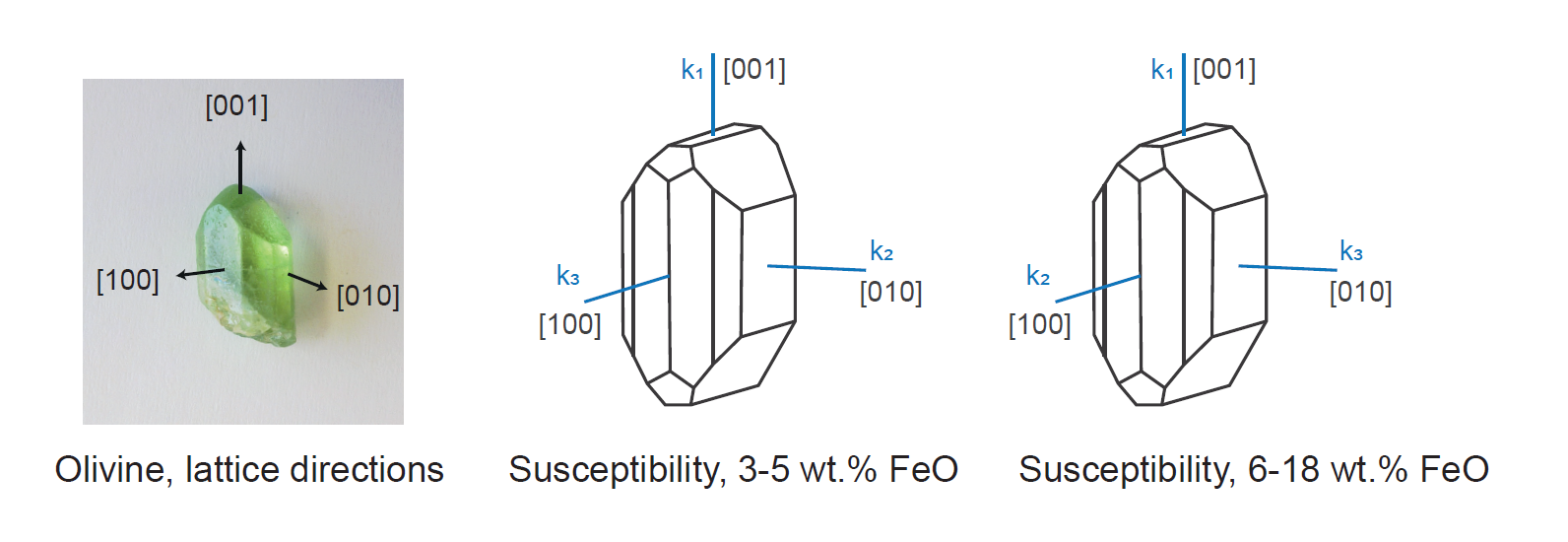Single Crystal Anisotropy
Magnetic properties of most single crystals are anisotropic and can be described by a symmetric, second-order tensor. Their susceptibility anisotropy is controlled by the arrangement of atoms in the crystal lattice, namely the geometry of the electron cloud in diamagnetic crystals, and the geometry of crystal sites occupied by iron. Interactions between neighbouring iron atoms, can be important in paramagnetic and ferromagnetic crystals. High-field experiments allow the separation between dia/paramagnetic and ferromagnetic contributions to the anisotropy. When the single crystal properties of a mineral are known, magnetic anisotropy in rocks can be used to infer mineral alignment.

Collaborators: A.R. Biedermann & A.M. Hirt, T. Pettke (Uni Bern)
- A.R. Biedermann, Magnetic anisotropy in single crystals: a review. Geosciences 8, DOI:10.3390/geosciences8080302, 2018.
- A.R. Biedermann, T. Pettke, T., R.J. Angel, and A.M. Hirt, Anisotropy of magnetic susceptibility in alkali feldspar and plagioclase. Geophysical Journal International, 205, 479-489, doi: 10.1093/gji/ggw042, 2016.
- A.R. Biedermann, C.B. Koch, T. Pettke, and A.M. Hirt, Magnetic anisotropy in natural amphibole crystals. American Mineralogist, 100, 1940-1951, doi:10.2138/am-2015-5173, 2015.
- A.R. Biedermann, T. Pettke, C.B. Koch, and A.M. Hirt, Magnetic anisotropy in clinopyroxene and orthopyroxene single crystals. Journal of Geophysical Research-Solid Earth, 120, 1431-1451, doi: 10.1002/2014JB011678, 2015.
- A.R. Biedermann, T. Pettke, E. Reusser, A.M. Hirt, Anisotropy of magnetic susceptibility in natural olivine single crystals, Geochemistry, Geophysics, Geosystems 15, 3051-3065, doi: 10.1002/ggge.20245, 2014.